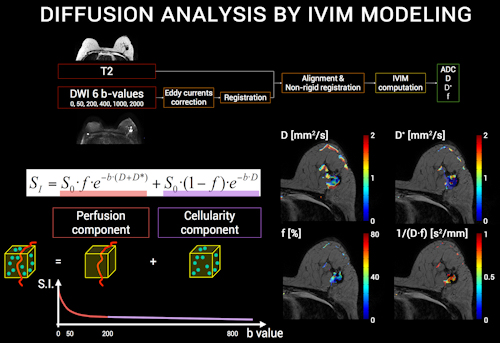Hi, I am excited to announce that the proposal to implement IVIM techniques in Dipy as part of Google Summer of Code 2016 has been accepted and I will be working on it over the summer under the guidance of Ariel Rokem, Eric Peterson and Rafael NH (who was a GSoC 2015 student working on DKI implementation in Dipy). Dipy is a python library for analysis of diffusion weighted MRI (dMRI).
Diffusion patterns can reveal microscopic details about tissue architecture and is used in clinical as well as neuroscience research. The intravoxel incoherent motion (IVIM) model describes diffusion and perfusion in the signal acquired with diffusion MRI. Recently the interest has expanded and applications have emerged throughout the body including kidneys, liver, and even the heart. Many more applications are now under investigation such as imaging for cancer (prostate, liver, kidney, pancreas, etc.) and human placenta. One of its largest uses is in brain mapping and neuroscience research such as Parkinson’s disease where it is used to study aging and structural degeneration of fibre pathways in the brain.
In the presence of magnetic field gradient pulses of a diffusion MRI sequence, the MRI signal gets attenuated due to motion, effects of both diffusion and perfusion. The IVIM model uniquely describes the diffusion and perfusion from data with multiple diffusion encoding sensitivities (bvalues).
The IVIM model represents the attenuation in the signal acquired with diffusion MRI using the following equation given by Le Bihan [1988]

where
 is the volume fraction of incoherently flowing blood in the tissue,
is the volume fraction of incoherently flowing blood in the tissue,  the signal attenuation from the IVIM effect and
the signal attenuation from the IVIM effect and  is the signal attenuation from molecular diffusion in the tissue.
is the signal attenuation from molecular diffusion in the tissue.I will be writing a new module in Dipy to calculate the various parameters of this model using this equation and hence obtain separate images for diffusion and perfusion. You can find the complete proposal and details here - IVIM in Dipy.
Le Bihan's original paper : http://www.ncbi.nlm.nih.gov/pubmed/3393671

Hi Shahnawaz!
ReplyDeleteA small correction - I was a GSoC student last year not this (I know I am getting old =P).
Also, can you add a link to study done by Le Bihan et al. (1988).
Best, Rafael
Hi Rafael,
ReplyDeleteCorrected the typo and added the study by Le Bihan !